In the first essay of this series, we discussed epistemology and pramāṇa (“instrument of knowledge”) theory generally. In the second essay, we discussed how according to the Buddhist epistemological tradition following Dignāga (fl. ca. 550 C.E.) and Dharmakīrti (fl. ca. 625 C.E.), there are two and only two such “instruments of knowledge”: perception and inference. As Dignāga and Dharmakīrti explain, there are two and only two instruments of knowledge (pramāṇas) because there are two and only two objects of knowledge (prameyas): particulars (svalakṣaṇas) and universals (sāmānyalakṣaṇas).
As was briefly touched upon in the previous essay, and will be expanded upon in future essays, a “universal” or “generality” or “sameness” (sāmānya) just is a conceptualization (kalpana); and it is just these “universals” which are the objects of the inferential instrument of knowledge. What an inference “knows,” in other words, is a concept: for example, the concept of “the presence of fire,” when inferring “the presence of fire” on the basis of the perception of smoke.
Conceptual Knowledge Versus Direct Perception
The key point here is that the conceptual knowledge that fire exists somewhere remote (parokṣa) to oneself is not the same thing as the “direct perception” (one meaning of the Sanskrit term pratyakṣa) of an actual particular fire that is “directly before oneself” (another meaning of pratyakṣa). Indeed, pratyakṣa and parokṣa are classical Sanskrit antonyms; hyperliterally, pratyakṣa means “before” or “against” (prati) “the eye” (akṣa). But to repeat the main point: a particular fire that is actually immediately before us can provide us with warmth; the conceptual knowledge of its remote (to us) existence cannot. By definition, if the fire is directly (pratyakṣa) before us, we have the direct perception (pratyakṣa) of it.
The Problem of Universals
A perceptual cognition, in other words, takes a particular (svalakṣaṇa), rather than a universal, as its object of knowledge. But before getting into the discussion of particulars, it is important to first say a few words by way of philosophical context. The opposition between these two technical terms, “particular” and “universal,” is a major and recurring theme in both Indian and Western philosophy. The specific terminology derives from medieval European scholastic debates centering around the philosophical contributions of the English Catholic monastic scholar William of Ockham (1287-1347 C.E.), however the “problem of universals” is one of the primary epistemological issues driving Plato’s (428-328 B.C.E.) ontology in much the same way (though to completely different ends) that this same issue drives Dharmakīrti’s ontology. In other words, recognition of this problem is a basic and recurring theme in philosophical traditions across the world.
In basic terms, the problem of universals concerns the nature of the relationship between an object and its properties, such as color or shape. (A more advanced, but still introductory, discussion may be found here). Do properties such as color and shape exist in any way separately from the objects they are understood to qualify—and, if so, how? For example, what is it that makes a chair, a chair? Does there exist some type of metaphysical “chair-ness,” such that all chairs somehow universally (the origin of the term “universal”) possess or participate in this “chair-ness”? Or perhaps this metaphysical “chair-ness” somehow metaphysically inheres in each individual chair, independently?
Realists or Nominalists?
Those who argue that these “universal” properties are in fact real in some metaphysical sense, separately and apart from the objects that they qualify, are called realists—because, again, realists maintain that universals have a real existence. Those who argue to the contrary that universals are real in name only are called nominalists, from the Latin nomen (“name”).
Broadly speaking, nominalists do not dispute that the same word can apply to different “particular” objects or instances. The question, and the metaphysical issue at stake, is whether the meaning of a word (not the word itself, that is, but its ostensible metaphysical referent, such as “redness”) exists independently of any particular instantiation (e.g., independently of any and all presently-existing “red” objects). To illustrate the broad contours of the debate by way of vast oversimplification: if all the red objects in the world disappeared tomorrow, and nobody ever used the word or saw the color “red” ever again, would “redness” still exist somewhere, in some kind of Platonic realm of ideas? Realists say yes. Nominalists say no.
Why Do the Buddhist Philosophers Care?
This may seem like fine metaphysical hair-splitting, but the stakes in concrete terms have historically been enormous, far too great to be described here. In terms of Indian intellectual history specifically (that is, separately from the European context, where nominalism vs. realism is still debated to this day), it should be sufficient to note that the medieval Indian context was rife with inter-religious debate, and that the consequences of these debates directly affected both royal and independent patronage of the many religious traditions of India, as well as their recruitment efforts, general prestige, and so on. In short, being able to argue rationally and persuasively in defense of one’s own tradition was enormously important to the health of that tradition. And there was no more basic metaphysical divide between the Buddhist and non-Buddhist traditions of India than on the question of universals. Indeed, the Buddhist position according to Dignāga and Dharmakīrti is strictly and vehemently nominalist, versus the entire landscape of various non-Buddhist traditions, which—for all their major disagreements with each other—were almost universally realist.
Having concluded this general discussion, the particular or “self-characteristic” (svalakṣaṇa) will be the topic of the next essay.




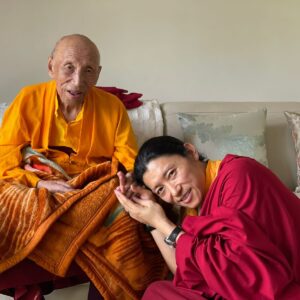
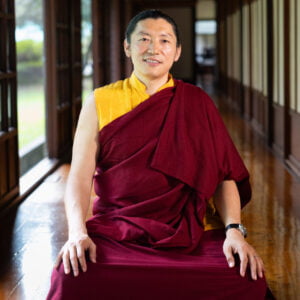
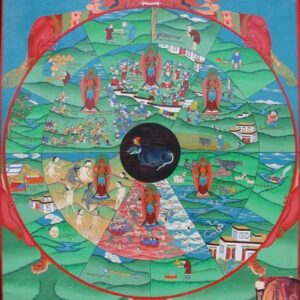
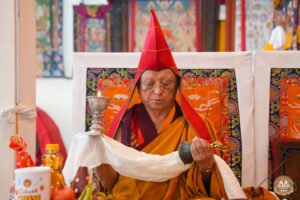
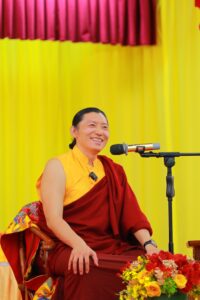

Responses
“REALISTS OR NOMINALISTS”—— fantastically stated . And the direct lively warm sensation “ pratyaksa” envelopes vs the remote conceptual knowledge “paroksa” conveys, so very inspired. Thank you for this article.